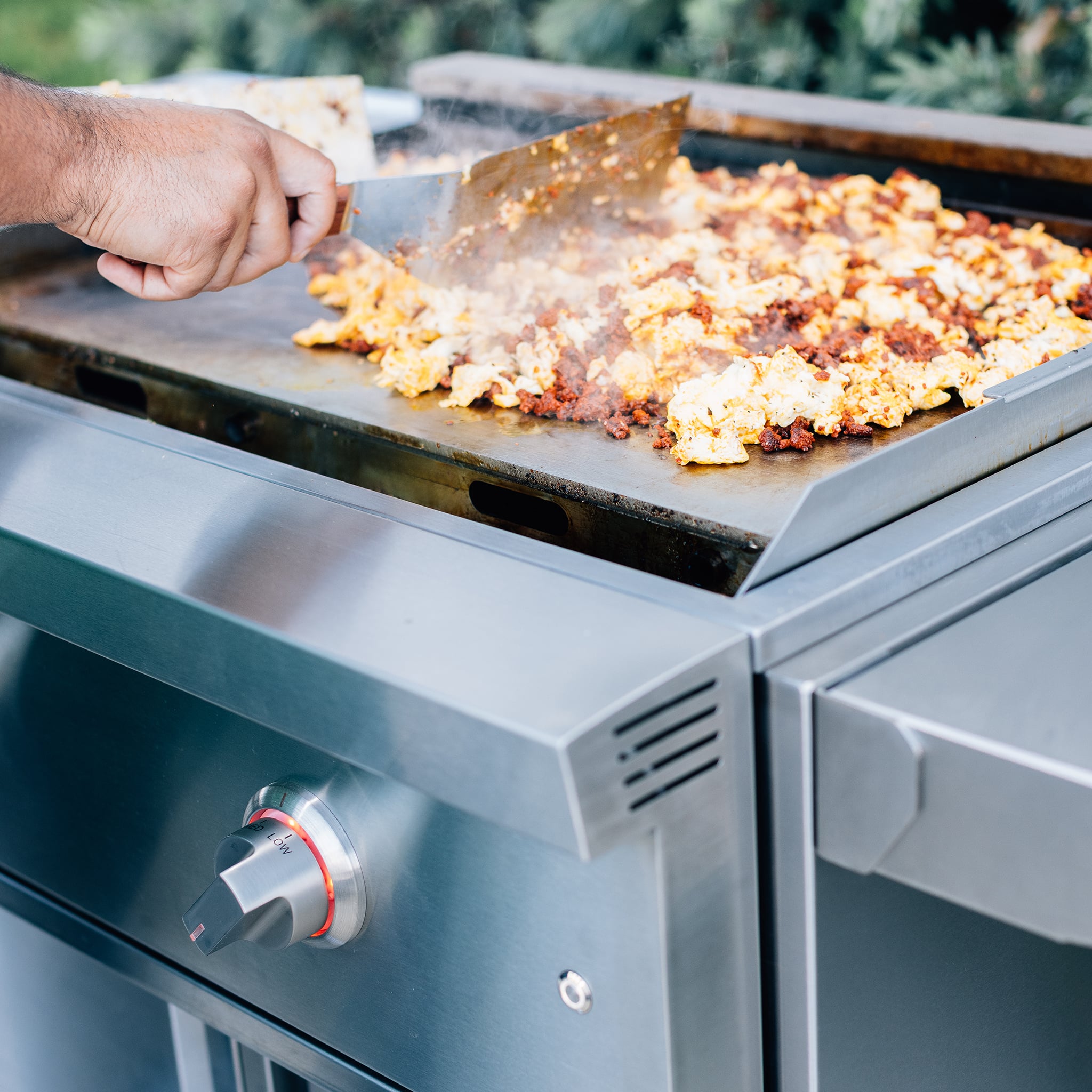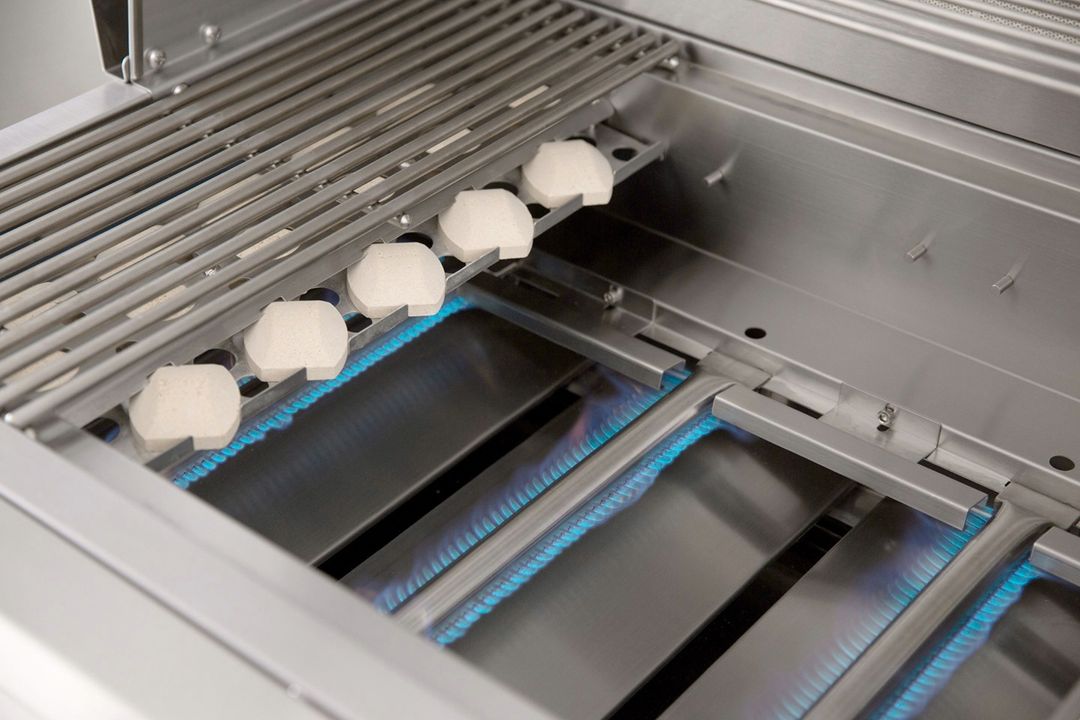Gas grills are among the most beloved pieces of outdoor equipment and a favorite cooking method for several reasons. They’re easy to use and forgiving because there’s no open flame or hot coals. But what do gas grills look like on the inside? What makes them work? This article will examine the anatomy of a gas grill so that you can better understand how your grill works and learn some tips about maximizing its potential.
A gas grill is a cooking appliance fueled by natural gas or propane. Available in all shapes and sizes, the most popular home grill is approximately 36 inches wide and 24 inches deep. A typical gas grill has two to four burners, and some have warming racks above the burners so you can cook multiple items at once. The centerpiece of the outdoor kitchen is a gas grill that can be purchased for built-in custom grill island installations or freestanding with a matching cart and stand that supplies extra storage and stability.
Let’s explore the different parts of your typical gas grill, what each piece does, and how it works together to create delicious meals.
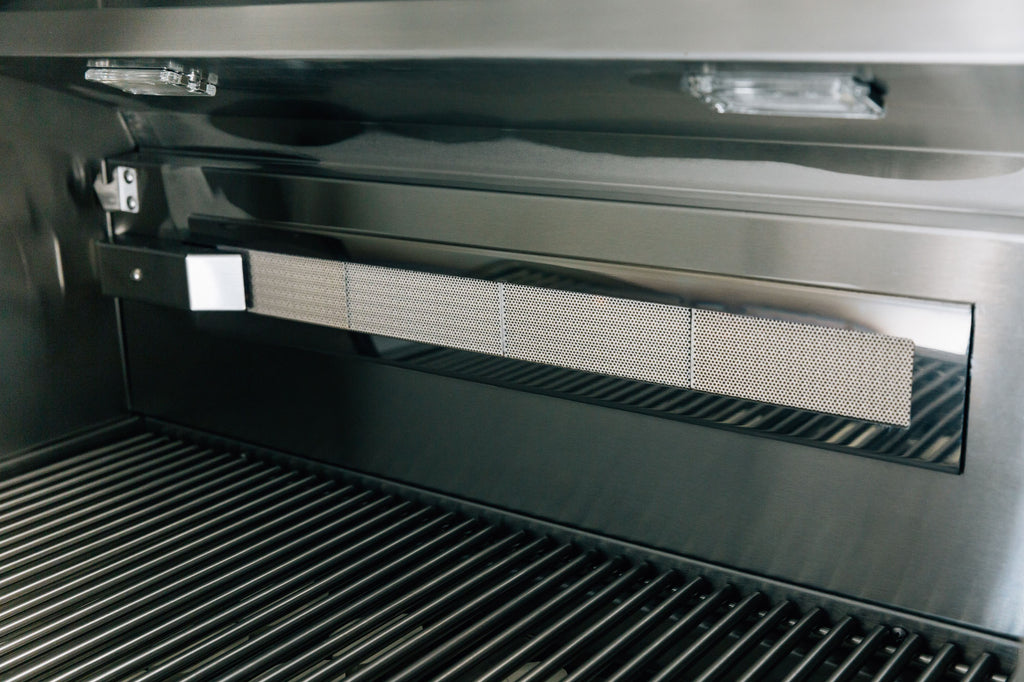
Cooking Grates
The cooking grates are the component that takes the most abuse of your grill because that’s where the food makes contact with the appliance. Usually made of high-grade stainless steel, they must be well made and durable to endure the full heat of the burners. Since they are exposed to the most wear and tear of any part of your barbecue, it is essential to clean them regularly.
The essential step in keeping your grates clean is to scrape them with a grill scraper after every use. This process will remove excess grease and food particles, preventing the buildup of an intense soot layer that can cause flavorless food or flare-ups during cooking.
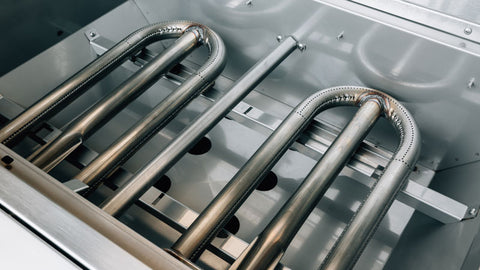
Burners
Burners are arguably the most crucial component of any grill. Usually constructed from stainless steel or cast iron, they allow the gas inside and release heat through holes lining the top side. All that heat requires heavy-duty manufacturing; otherwise, they will break down and need to be replaced often, as in budget grills.
You might not think about it, but your grill’s burners are what give life to the heat that will eventually make those delicious grilled veggies. Inevitably, food and grease droppings will drip onto them, compromising their heat transfer capabilities. Without them correctly maintained with a bit of oil and some elbow grease now and then, you’ll have an uneven flame, leading to poor grilling experiences.
Barriers/Radiants
Barriers, also called radiants, are necessary parts of your grill because they help protect the burners and distribute heat evenly. They minimize flare-ups and extend the life of your grill by incinerating drippings away from your burner’s surface so they don’t accumulate in one place. They need to be cleaned regularly since most of the scrapings from the grill grates will fall on them and impact their function.
Venturi Tubes
Venturi tubes deliver gas and air into burners, which produces heat for grilling. The burners need a lot of oxygen to provide all that heat, and the venturi tube system controls fuel flow by regulating the amount of flame produced by burning gases with oxygen during cooking time. Pests like spiders that crawl inside when inactive or the adverse wear from the elements over time can require maintenance and cleaning.
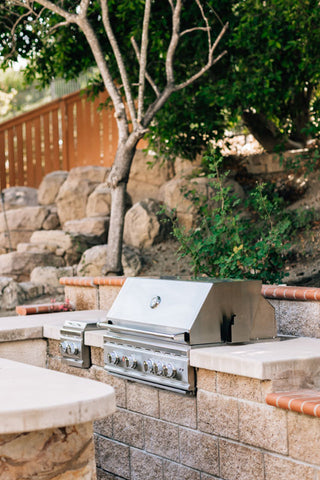
Control Knobs
Grilling enthusiasts and most amateurs know about the control knobs on a gas grill. The burner control knob is what you use to turn your fire up or down by adjusting the gas flow to the burners. When a fire has broken out, these knobs can be used to kill their fuel source by turning them off. For safety’s sake, this part must be replaced as soon as it becomes unreliable.
Igniters
The igniter or ignition system sparks a flame, making it easy for your fuel source to connect with the burners. There are several types of ignition systems. The most popular are piezo starters, which use a tiny spark to create a flame. Another is a spark generator, which uses a battery or electrical current to ignite the fuel.
Temperature Gauge
The temperature gauge helps you cook your food by measuring the temperature inside your grill. If you have not used one before, it’s helpful to watch this at all times for more precise cooking and meat preparation.
Grease Tray
Grease trays collect excess grease and food particles that fall through the grates and off the barriers during the grilling process. They should be regularly emptied and cleaned to prevent overflow, corrosion, food contamination, and fire hazards.
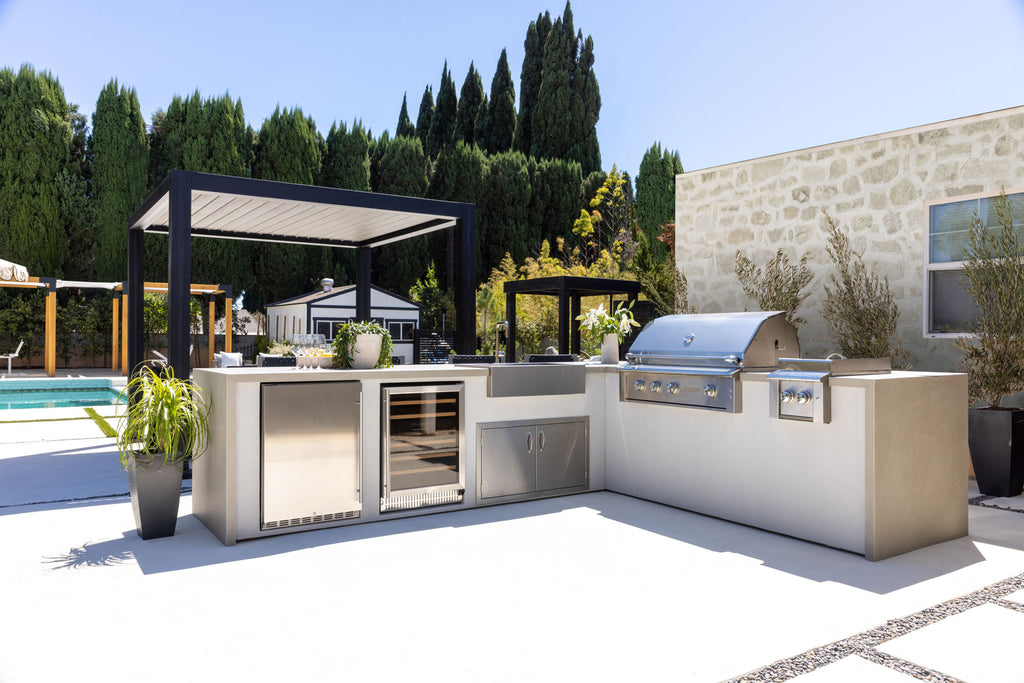
Ready for Some Summer Grilling?
Gas grills aren’t very complex machines, but understanding their key components will help you better care for your investment. Every gas grill has different parts and functions depending on its size or type, so read the user manual for proper maintenance and usage. Now that you better understand how your gas grill works, it’s time to practice your chops because summer’s coming!

